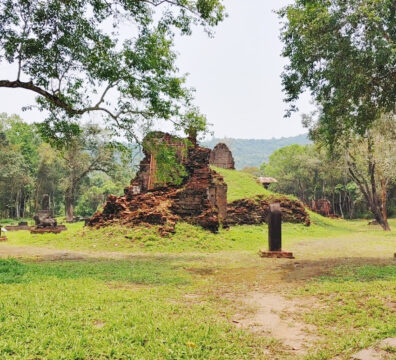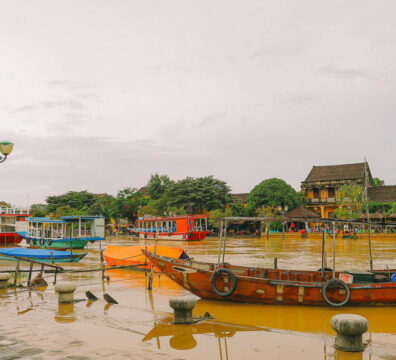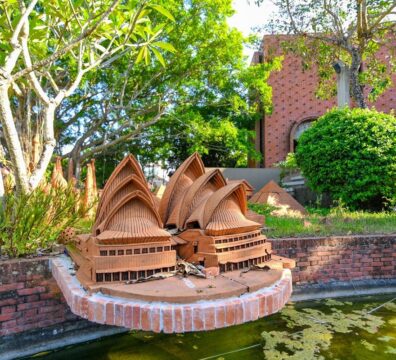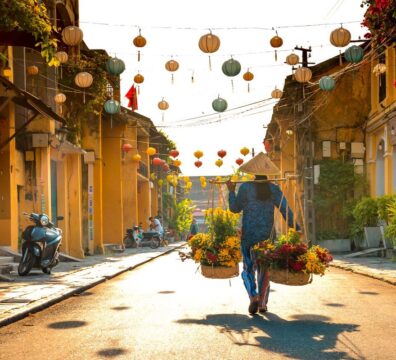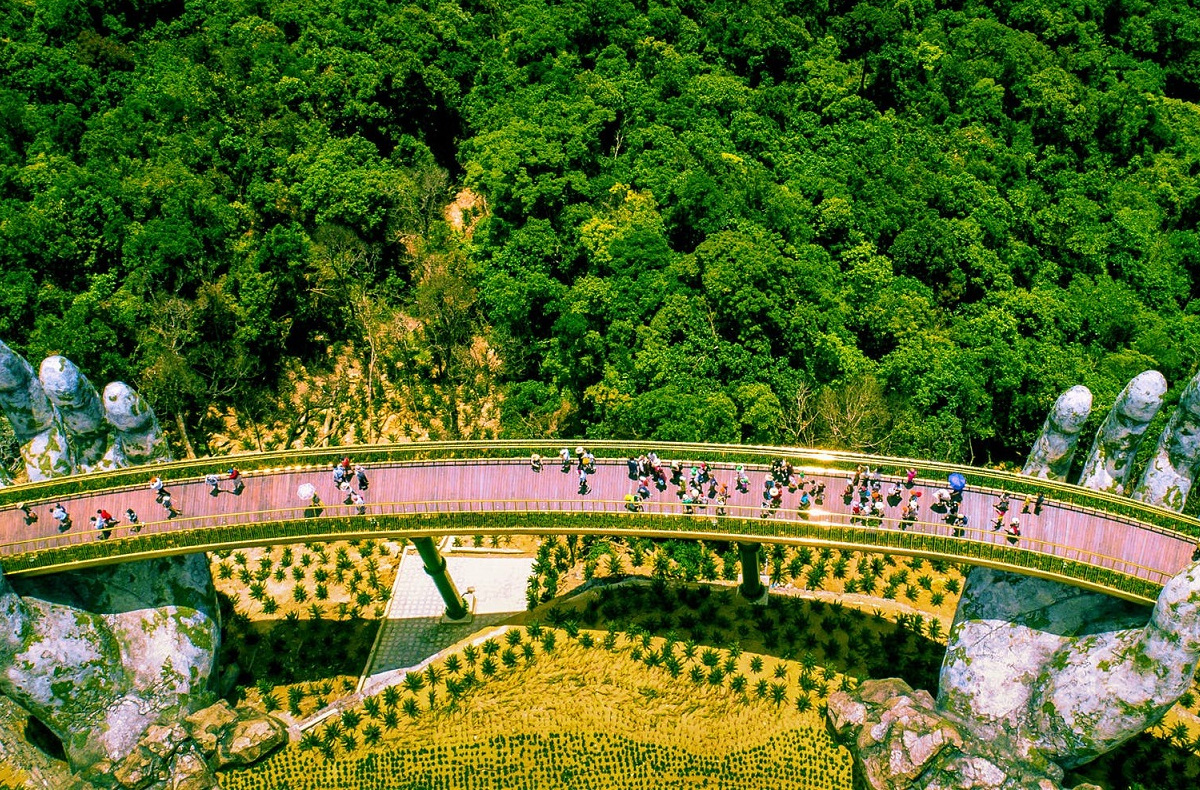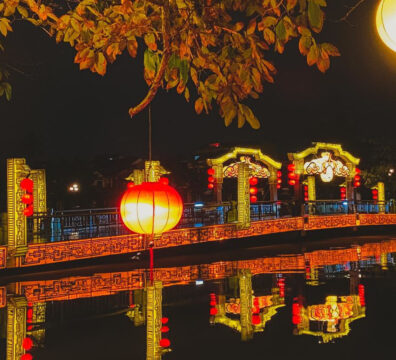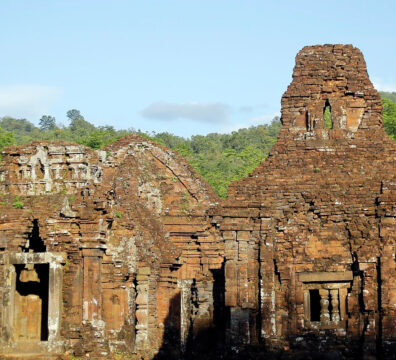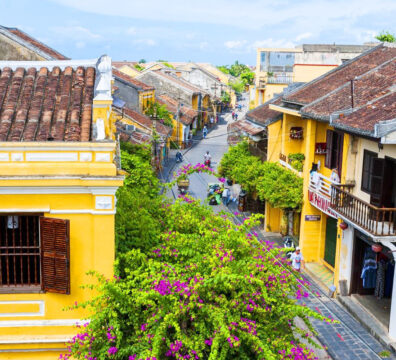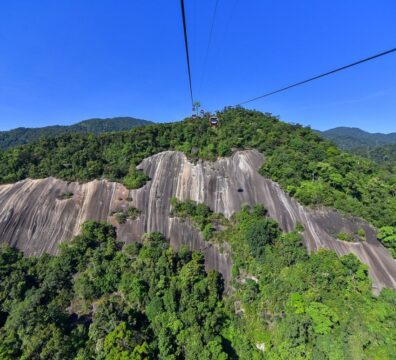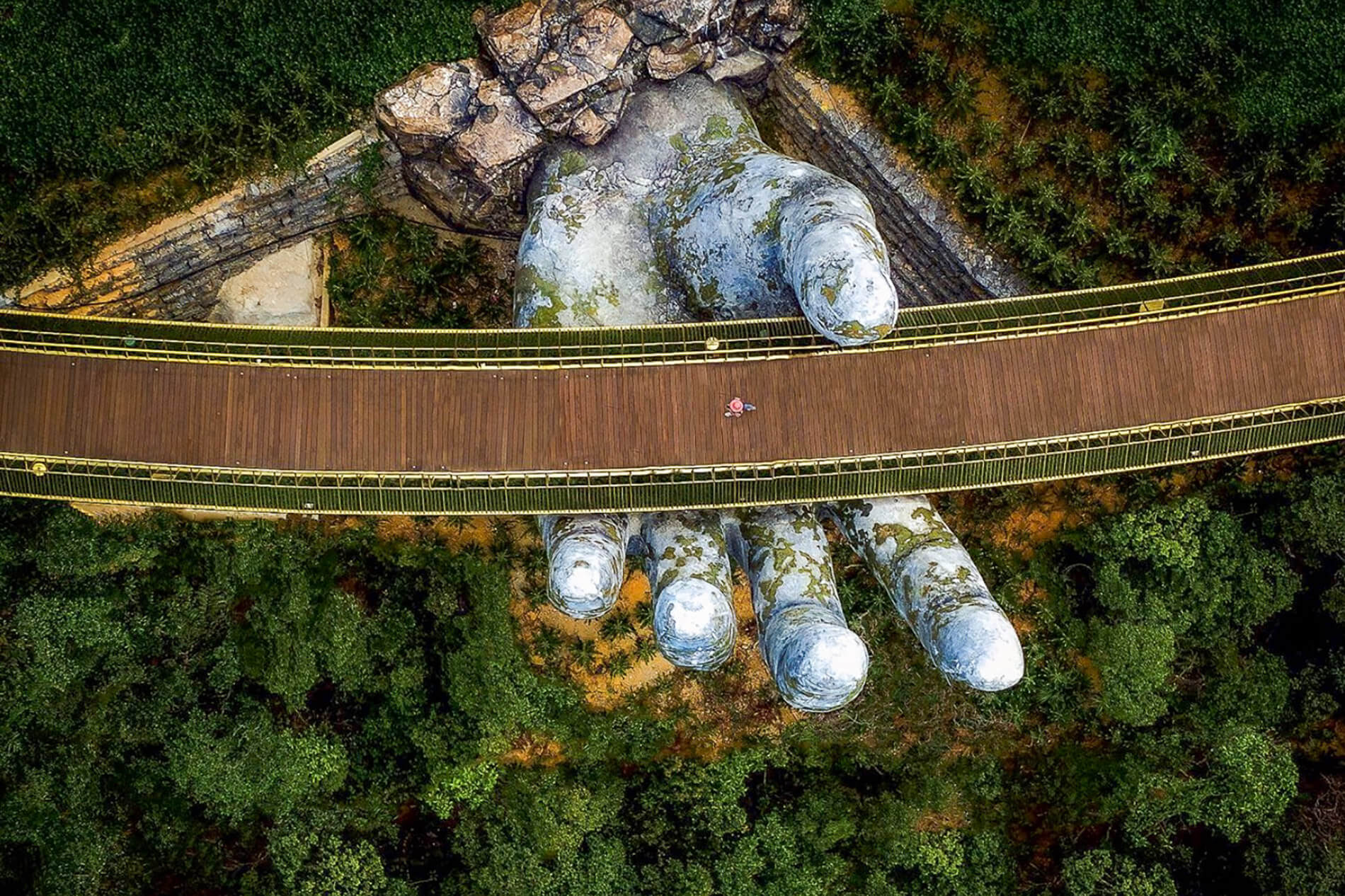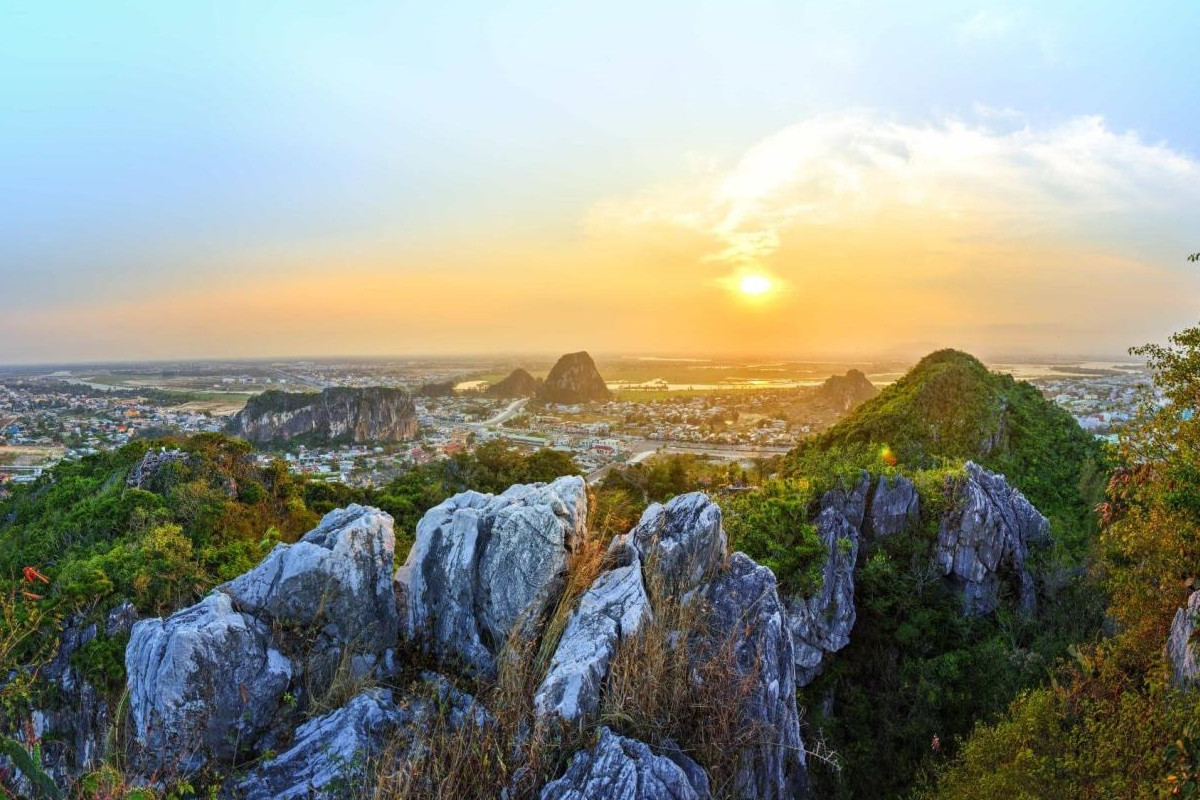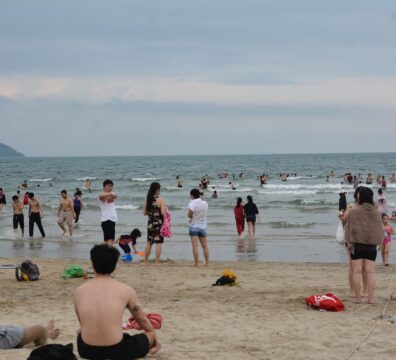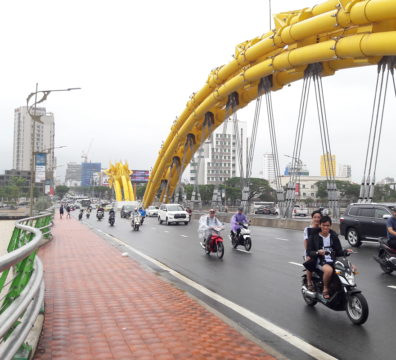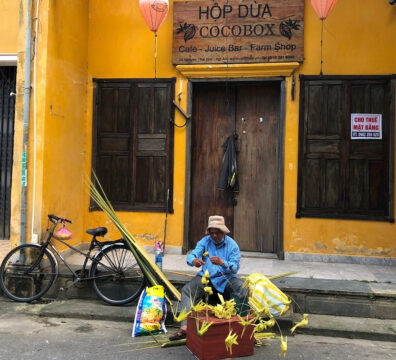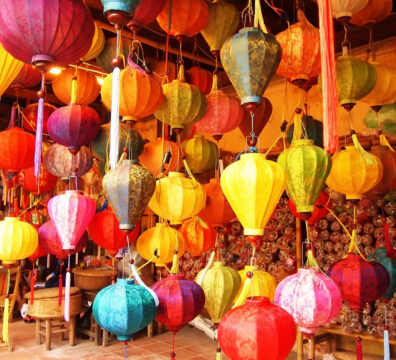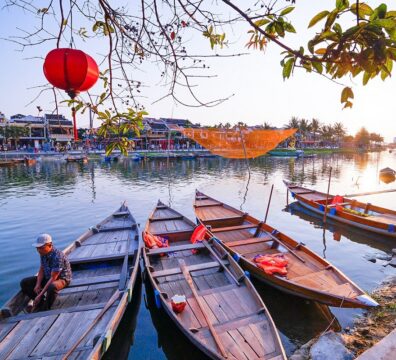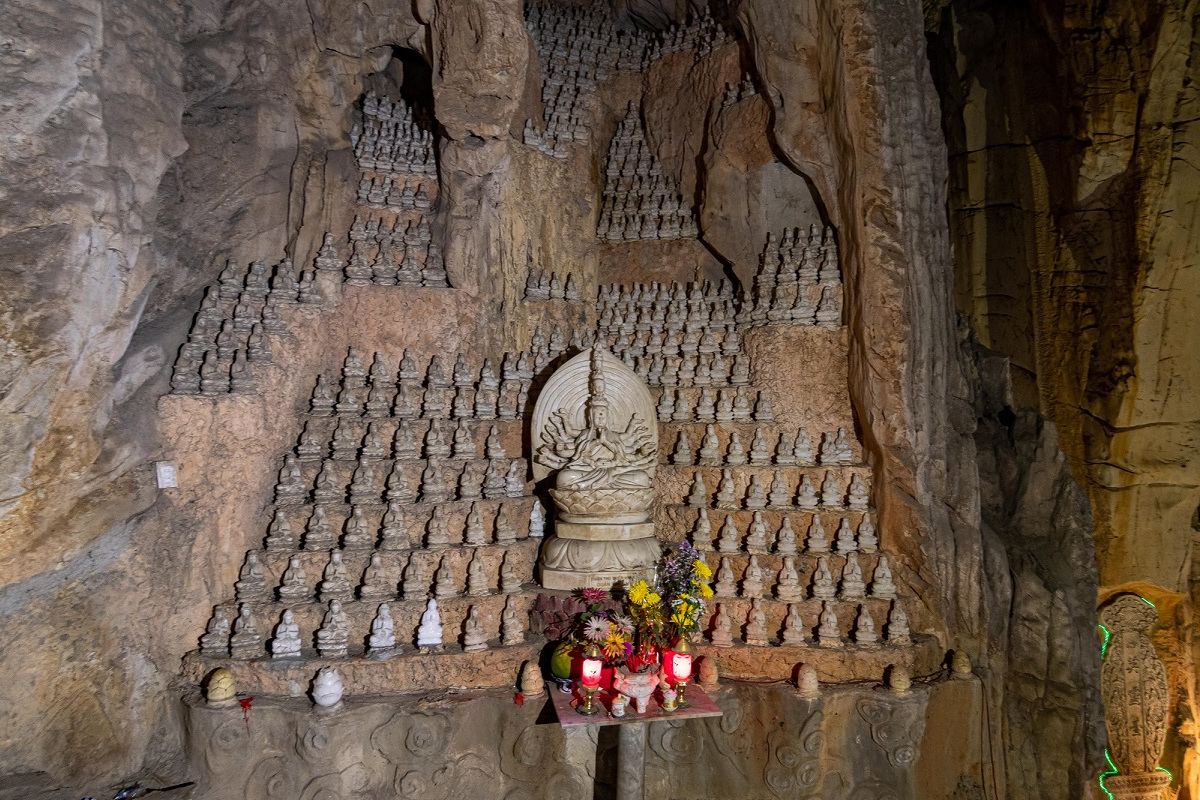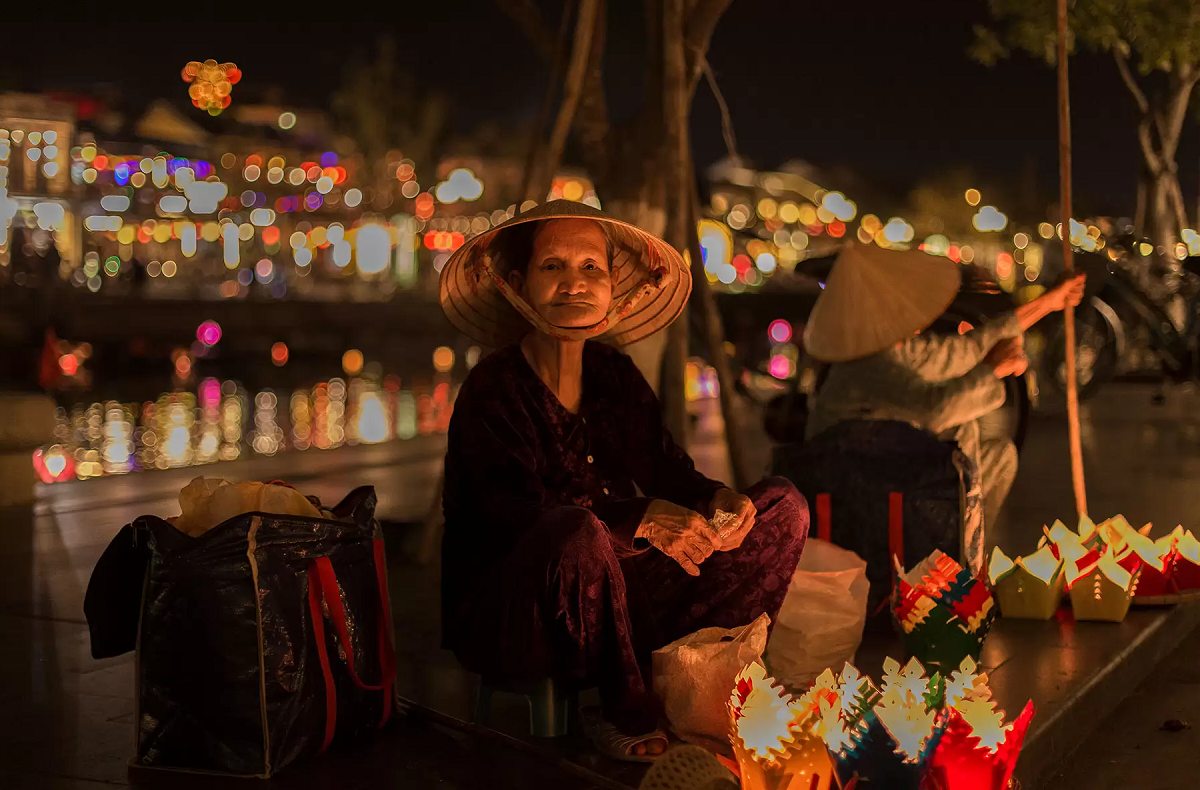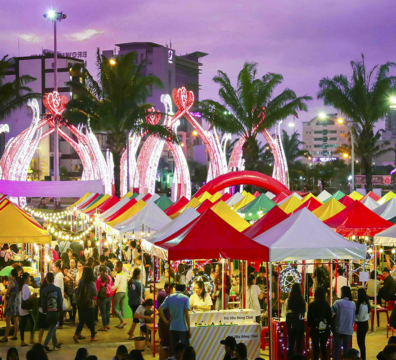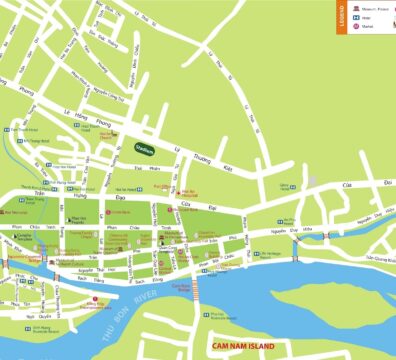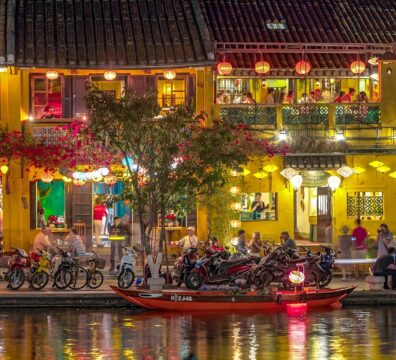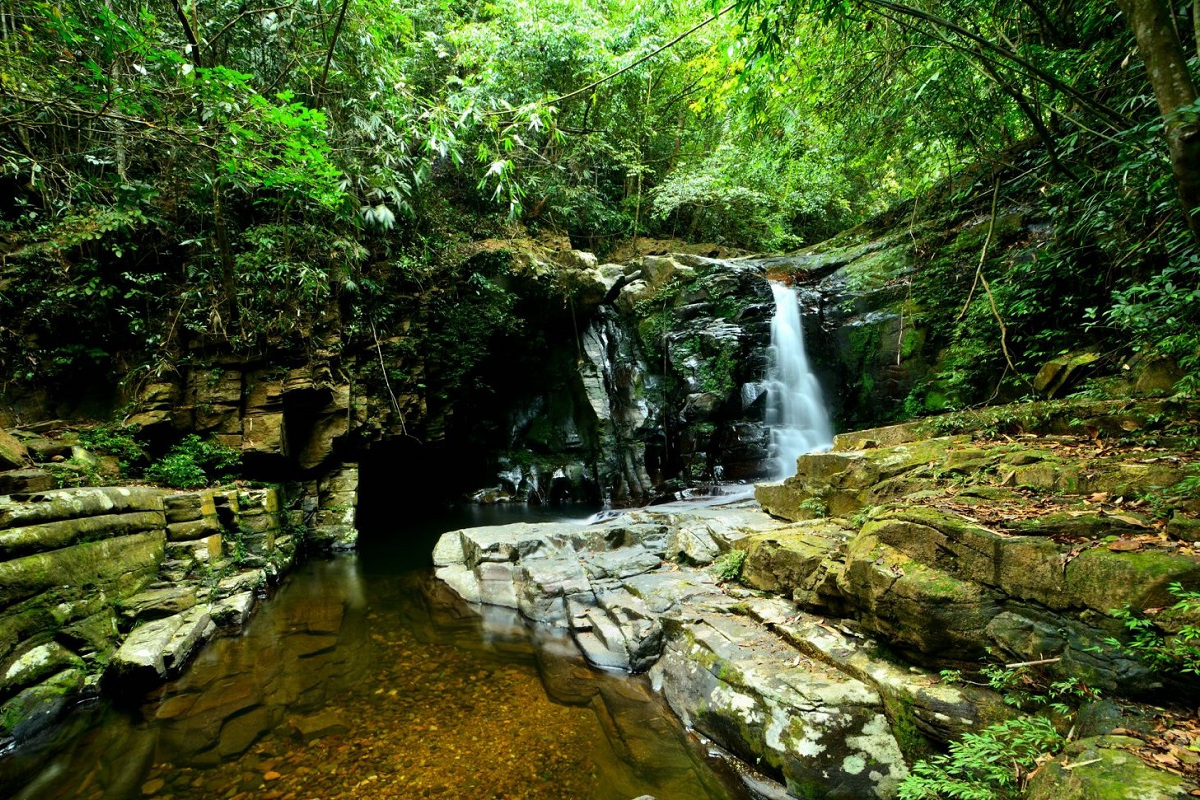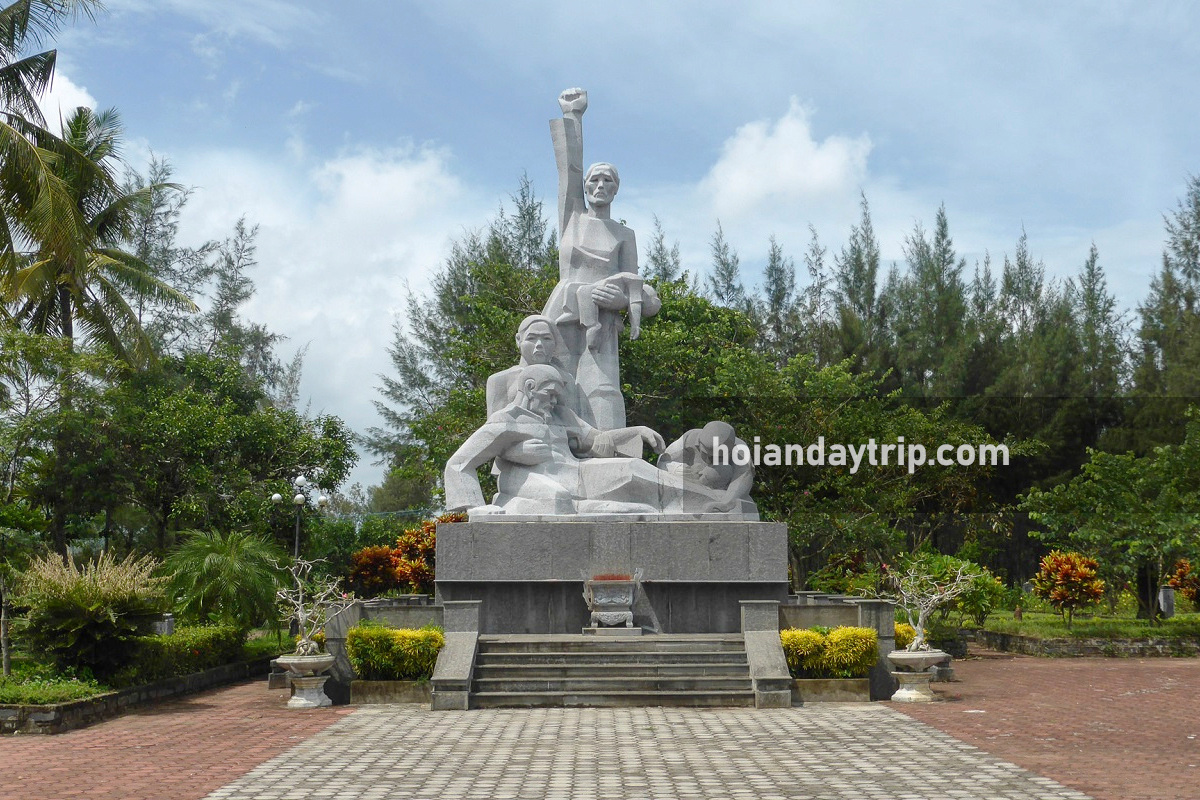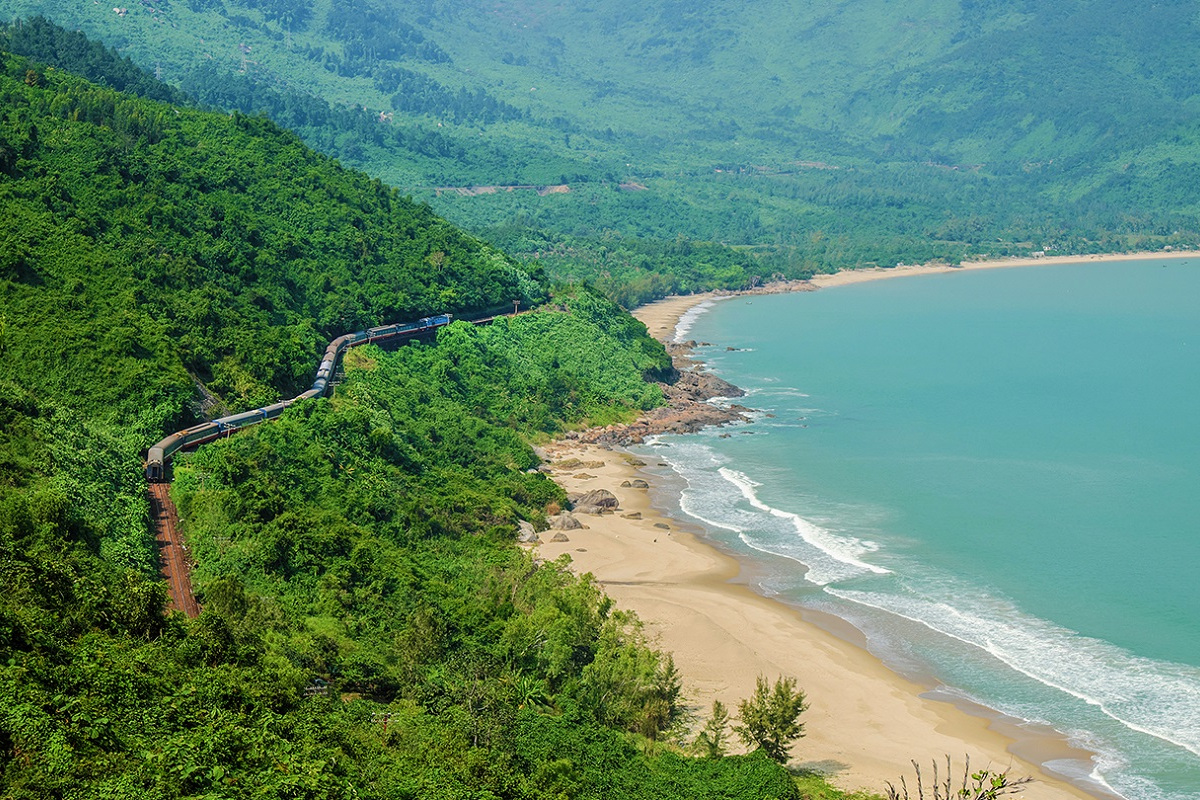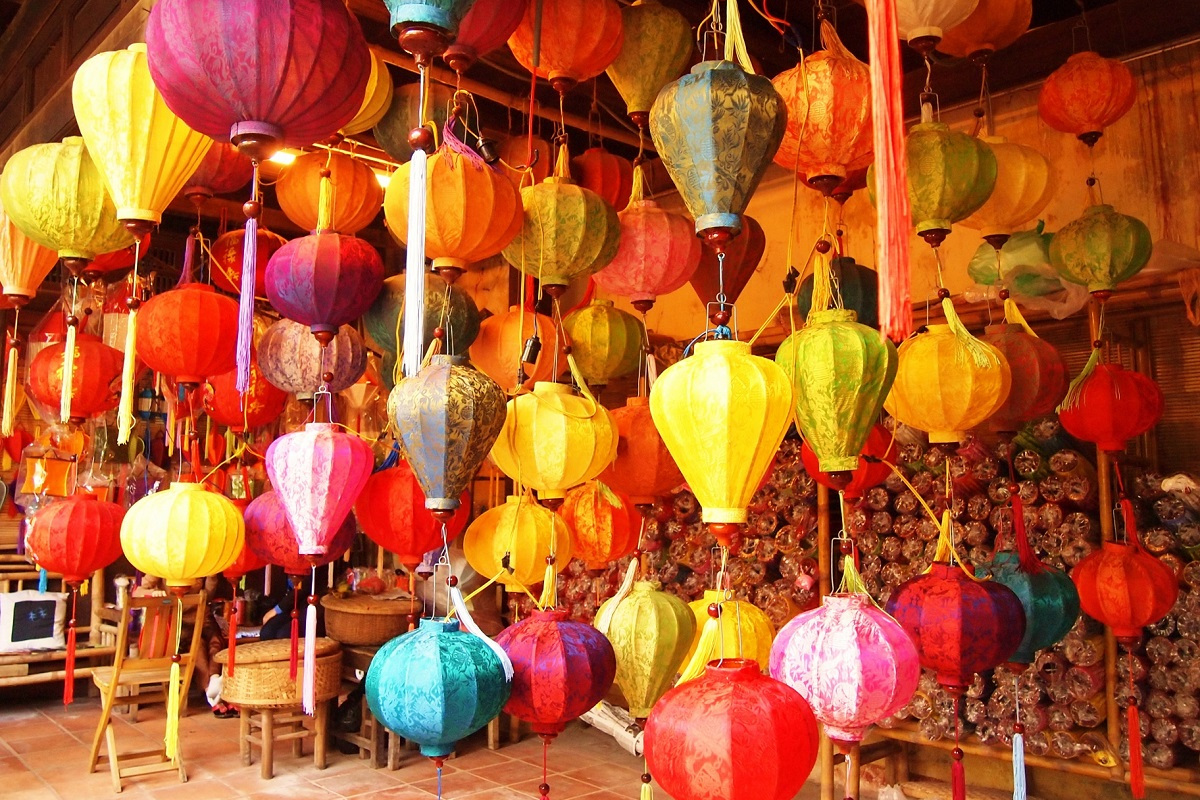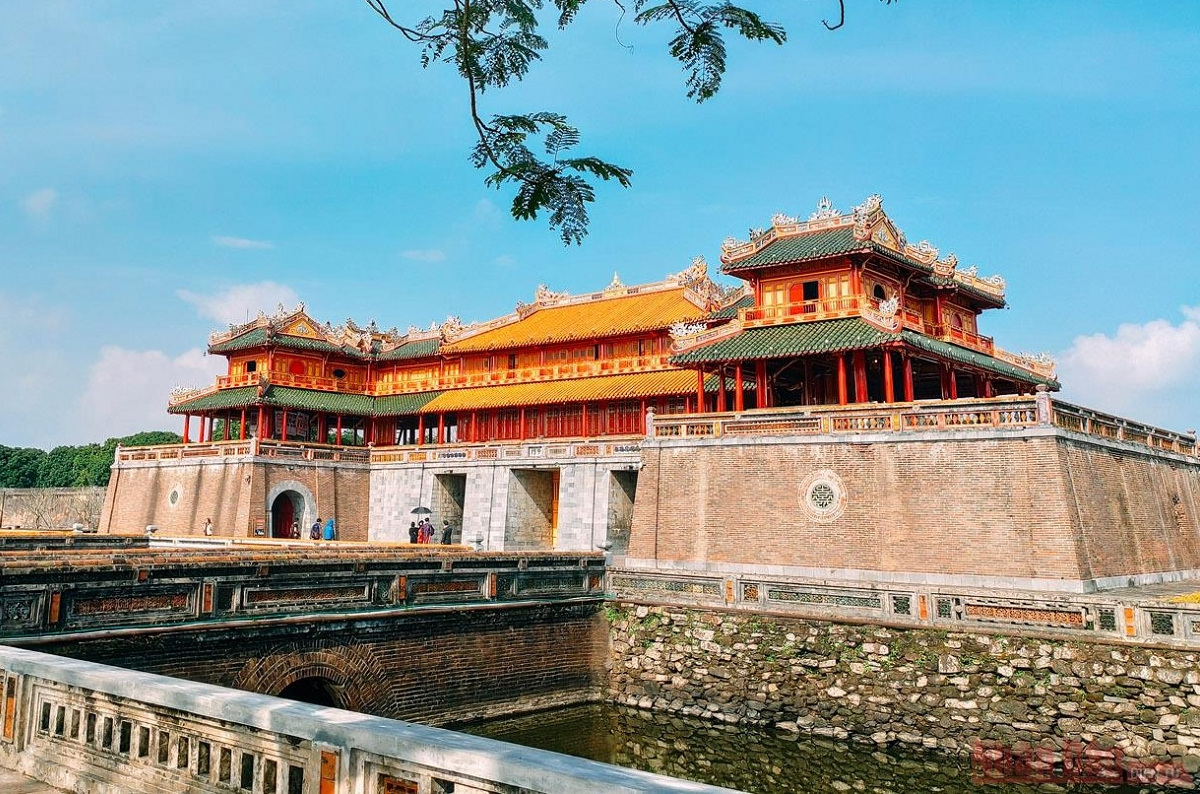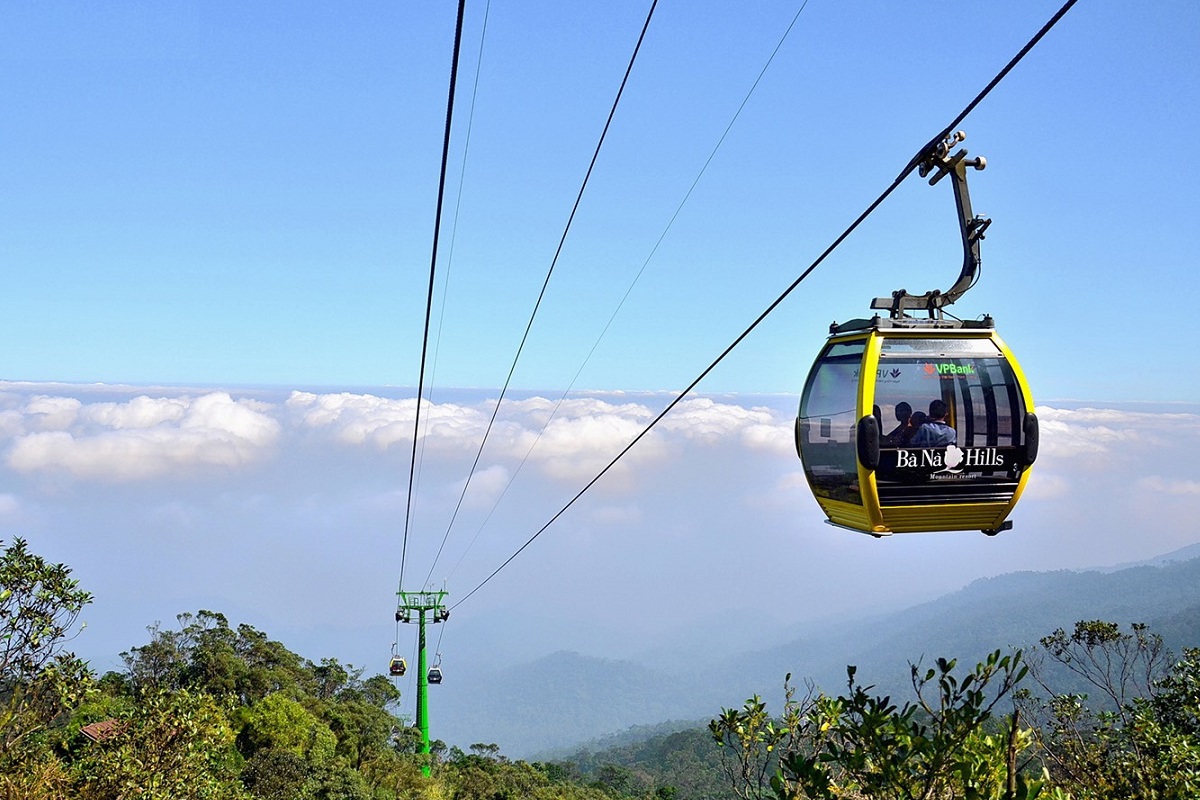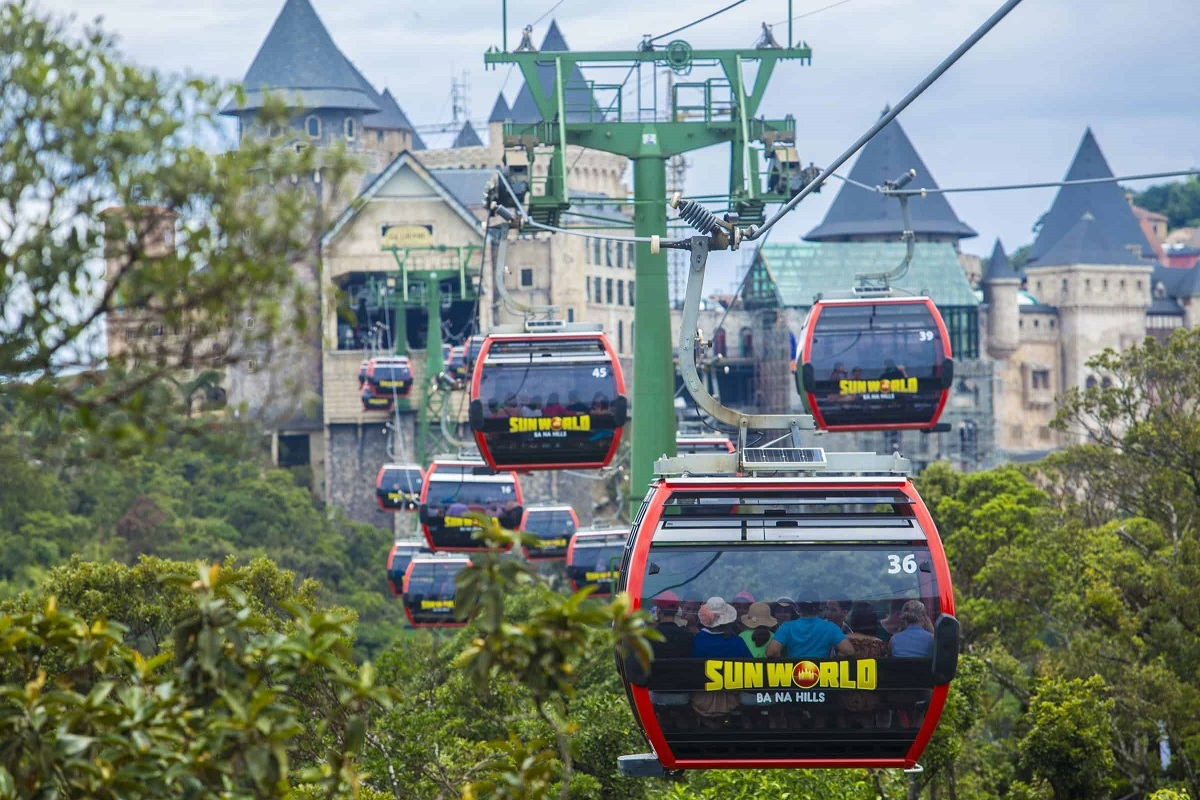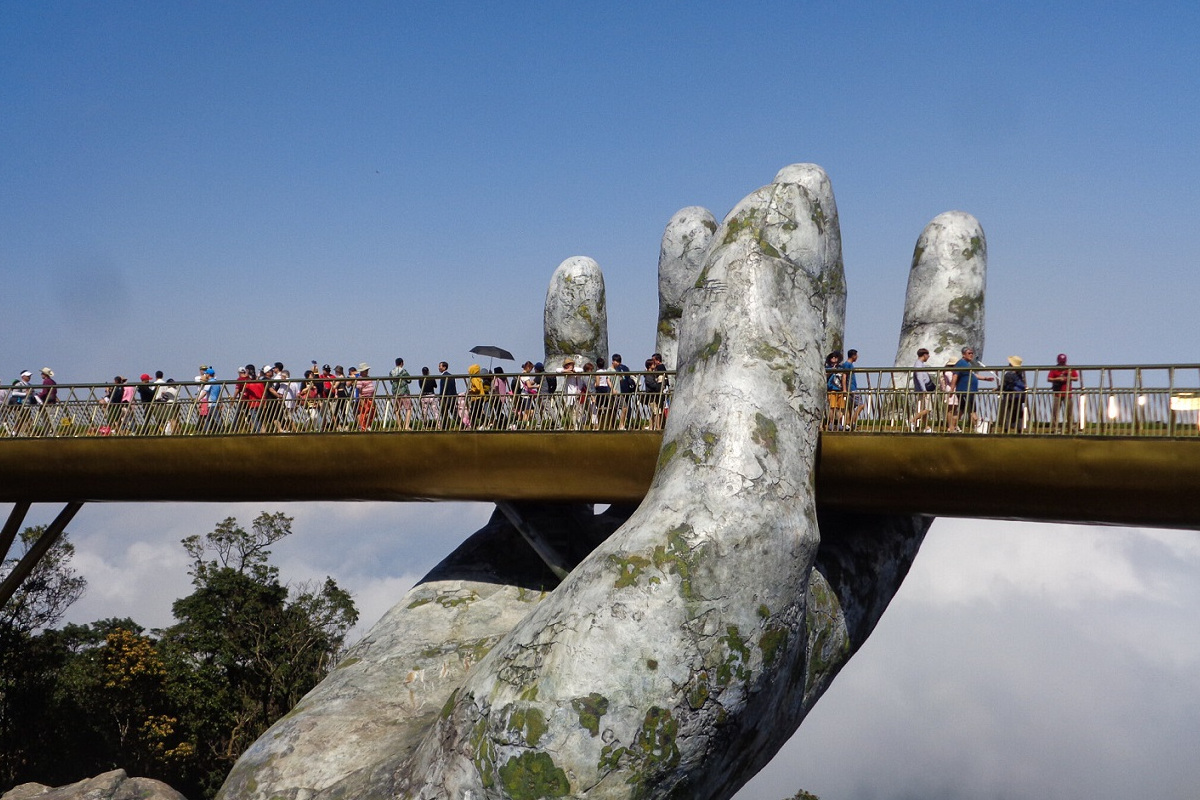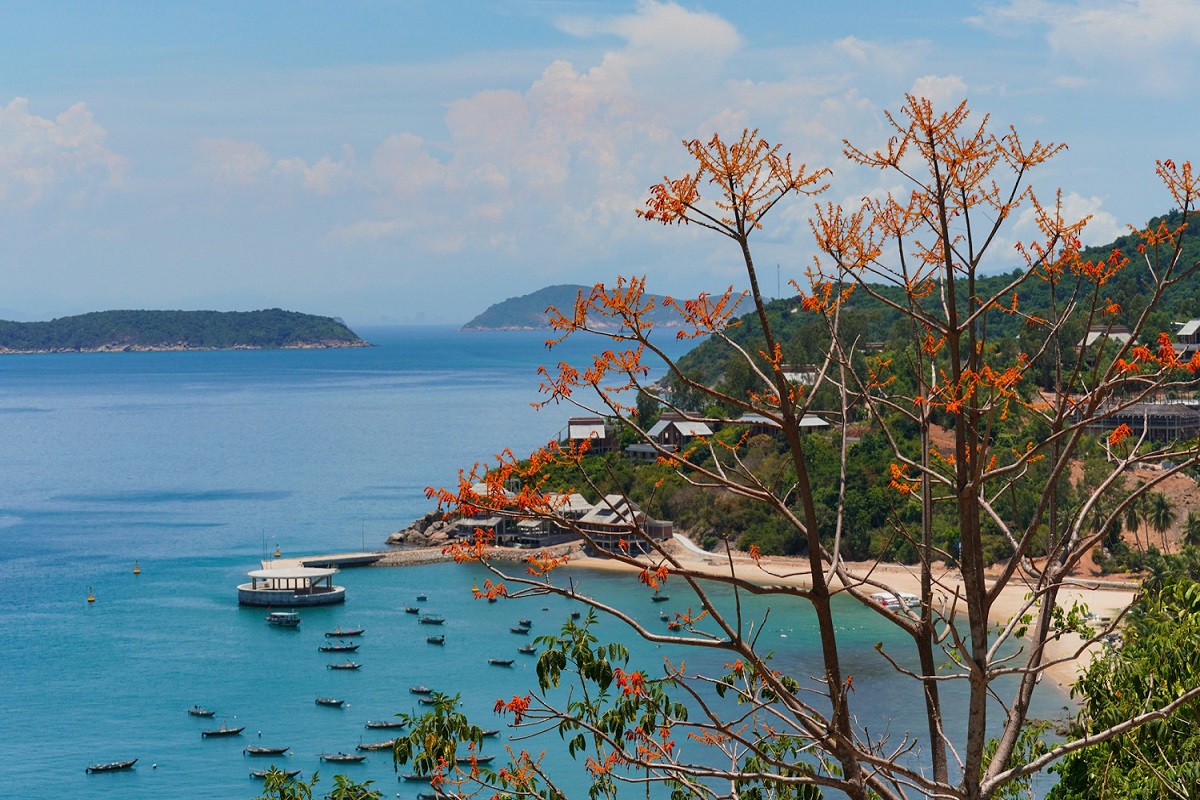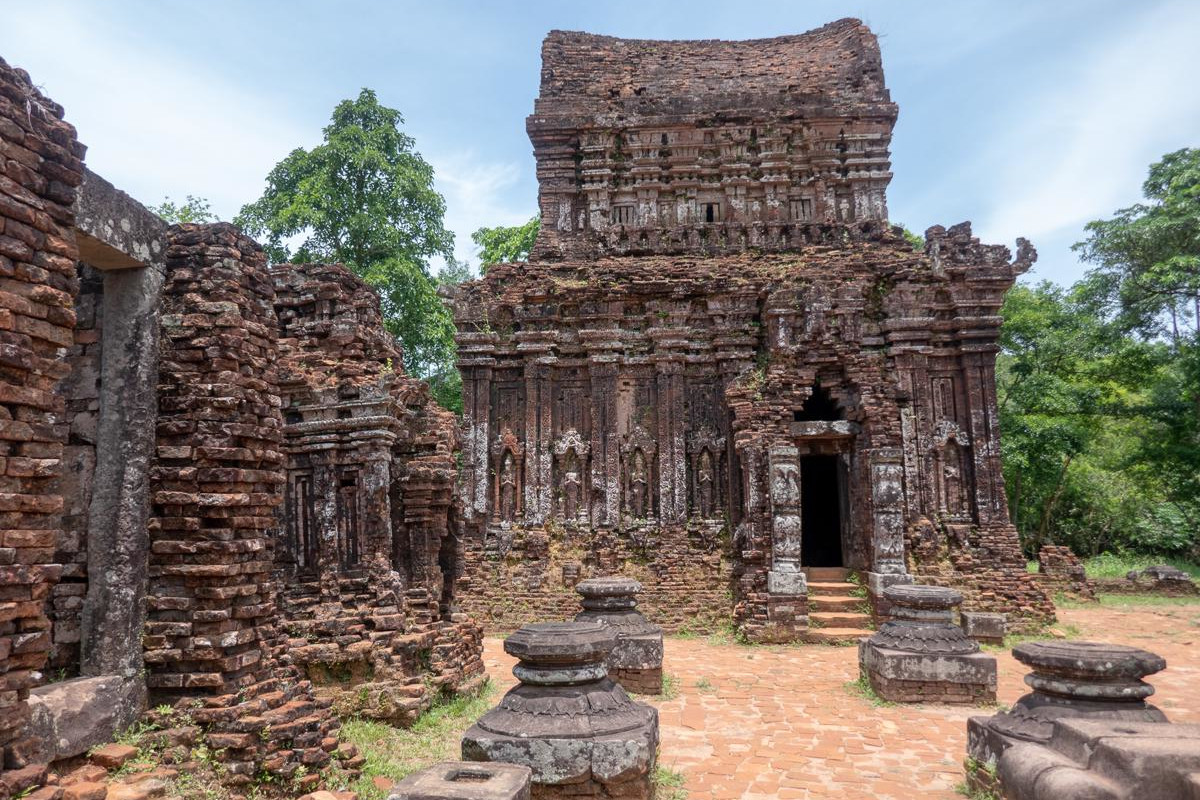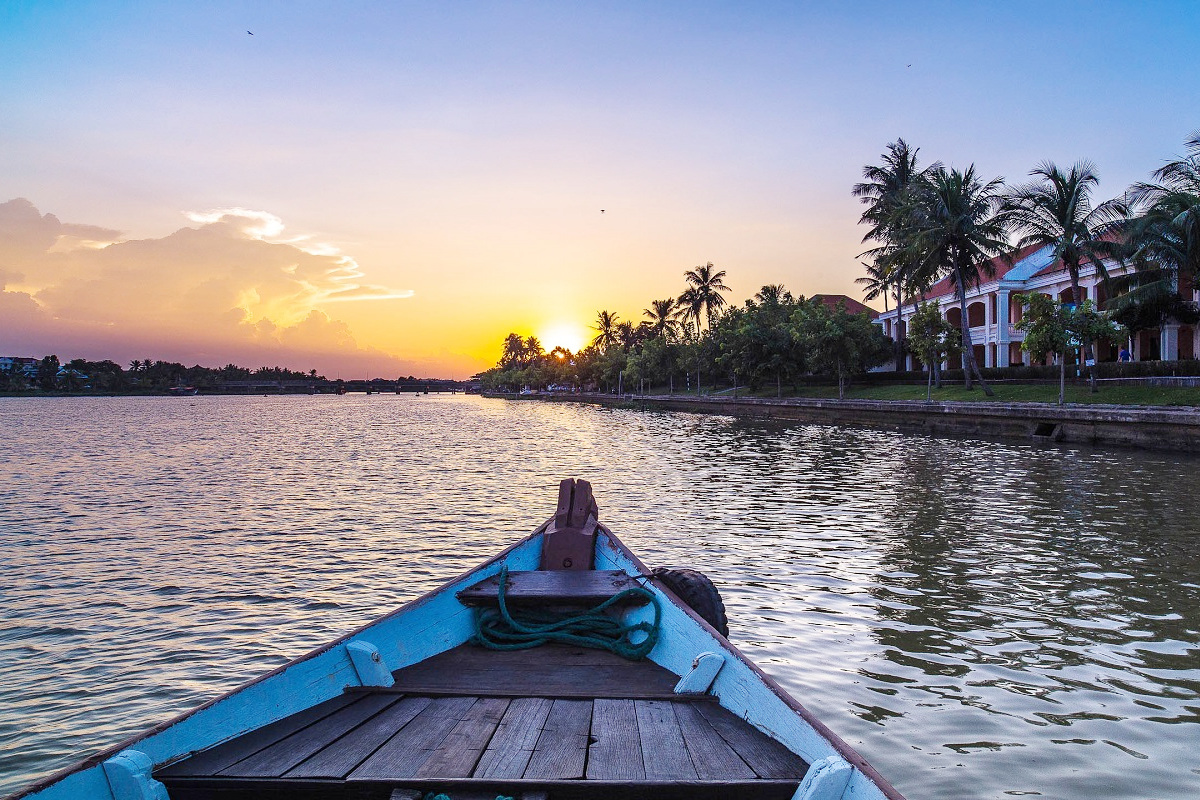Although in the Marble mountains – the most visited attraction in Da Nang, travelers often miss Am Phu cave. One of reasons is that it’s mentioned much online and not recommended by travel companies (time for the mountain itself is long already). Due to its fascinating beauty and association with local history and culture, Am Phu cave is worth sightseeing.
In this article, everything travelers need to know about Am Phu cave in Da Nang is provided. How to get there, what to do nearby or tours, we also mentioned to help finalize the visiting plan quicker.
By the way, 260 kilometers north of Da Nang, Phong Nha – Ke Bang national park is known for hundreds of caves, including the world’s largest one – Son Doong. It’s titled “the Kingdom of caves”. In 2003, Unesco added it into the world heritage site list, and in 2015, this was rewarded again thanks to high biodiversity. If have time, why not visit?
Read also:

Table of content
- 1 What is Am Phu Cave in Da Nang?
- 2 Location of Am Phu Cave and How to Get There
- 3 Am Phu Cave Opening Hours
- 4 Am Phu Cave Entrance Fee and Tickets
- 5 History of Am Phu Cave
- 6 What to Expect in Am Phu Cave?
- 7 Places to Visit near Am Phu Cave
- 8 Am Phu Cave Tour
- 9 Am Phu Cave on Google Maps
- 10 Related Posts
- 11 Non Nuoc Beach: The Famous Beach of Da Nang
- 12 How to Get from Da Nang to My Son Sanctuary
- 13 Bach Ma National Park: Hiking, Trekking in Da Nang and Hoi An
- 14 Hoi An Wet Season: What to Do in Hoi An When It Rains?
- 15 Thanh Ha Terracotta Park
- 16 Vinwonders Nam Hoi An Theme Park (formerly Vinpearl Nam Hoi An)
- 17 Am Phu Cave (Hell Cave) – Things to Do in Da Nang
- 18 Hoi An or Hue: Which is Better?
- 19 Asia Park and Sun Wheel in Da Nang (Sun World Da Nang Wonders)
- 20 The Official Hoi An Travel Guide (MUST READ)
- 21 The Hoi An Market (Hoi An Central Market) Complete Guide
- 22 Hoi An Memories Show: The Best of Hoi An Impression Theme Park
- 23 How to Get to Golden Bridge from Da Nang
- 24 Hoi An Bridge: Famous Bridges in Hoi An
- 25 Da Nang Food Specialties: What to Eat in Da Nang
- 26 How to Get From Hoi An to My Son Sanctuary
- 27 Hoi An’s Chinese Assembly Halls and Chinese Temples
- 28 Hoi An Walking Tours: Heritage, Foods, Photography & Locals
- 29 Hoi An Self Guided Walking Tour – Hoi An On Your Own
- 30 How to Visit Golden Bridge Vietnam
- 31 Da Nang Shore Excursions: Guided Tours From Tien Sa Port
- 32 Unique Experiences in Hoi An and Why?
- 33 Han Market (Cho Han): Where to Shop in Da Nang?
- 34 An Bang Beach: A Guide to Hoi An’s Best Beach
- 35 Experiences in Hoi An: Get Insight Into Hoi An’s Local Culture
- 36 Da Nang Cathedral (Da Nang Pink Church)
- 37 Things to Do in Ba Na Hills Besides Golden Bridge
- 38 Hoi An Nightlife: What to Do in Hoi An At Night?
- 39 Hoi An Countryside: Villages, Rice Fields & Tours
- 40 How to Get to Golden Bridge From Hoi An
- 41 Hoi An Entrance Fee: Old Town, Golden Bridge, My Son, More
- 42 Hoi An Airport: Everything You Need to Know
- 43 Hoi An Lantern Boat Ride on Hoai River
- 44 Da Nang Half Day Tours
- 45 Hoi An Private Car and Driver
- 46 Da Nang Private Car and Driver
- 47 What to Do in Hoi An Ancient Town
- 48 Da Nang and Hoi An Itinerary for Visitors Staying Overnight in Hoi An
- 49 Hoi An 3 Day Itinerary: A Travel Plan for 3 Days in Hoi An
- 50 Hoi An Free Things to Do: Budget Travel in Hoi An Vietnam
- 51 Hoi An One Day Itinerary: A Travel Plan for One Day in Hoi An
- 52 Da Nang Things to Do: Guide to What to Do in Da Nang Vietnam
- 53 Da Nang Best Things to Do and Reasons
- 54 Hoi An Half-Day Tours: Guide to Half Day Trips From Hoi An
- 55 Hoi An Day Tours: A Guide to Best Day Trips From Hoi An
- 56 Hoi An Beach: A Guide to All Beaches in Hoi An Vietnam
- 57 Hoi An Food Specialties
- 58 How to Get From Hoi An to Da Nang
- 59 Hoi An Cheap Things to Do: All Solo Travelers Need to Know
- 60 Hoi An Best Things To Do: Recommendations from Local Experts
- 61 Hoi An Things to Do: All What Can You Do in Hoi An Vietnam
- 62 Hoi An Things Not to Miss: A Guide to Must Do in Hoi An
- 63 Hoi An or Da Nang: Which is Better for First Time Visitor?
- 64 Hoi An Pottery Village: A Guide to Thanh Ha Pottery Village
- 65 Hoi An Ancient Town Tour
- 66 Hoi An Old Town Ticket: Price, Sellers, Included Sites, More
- 67 My Son Sanctuary Tour
- 68 Hoi An Lanterns: Festival, Making Class, Where to Buy, More
- 69 Hoi An Best Area to Stay: Guide to Where to Stay in Hoi An
- 70 Hoi An Weather by Month: Guide to Hoi An Monthly Weather
- 71 Da Nang Best Area to Stay: Guide to Where to Stay in Da Nang
- 72 Da Nang Cave Tour: Best Underground Activities in Da Nang
- 73 Da Nang Best Time to Visit: Guide to Best Weather in Da Nang
- 74 Da Nang Weather by Month: Guide to Monthly Weather in Da Nang
- 75 What to Do in Da Nang At Night
- 76 Lang Co Vietnam Travel Guide
- 77 Hoi An River Cruise: Guide to The Best Boat Tour in Hoi An
- 78 What to Do in Da Nang for 3 Days
- 79 Hoi An Old Town Boats: Guide to Boat Rides in Hoi An Town
- 80 Hoi An 2 Day Itinerary: Traveler Guide to 2 Days in Hoi An
- 81 Cham Island Hoi An
- 82 Hoi An Basket Boat Ride
- 83 Hoi An Coconut Village: A Guide to Cam Thanh Coconut Village
- 84 My Khe Beach: A Complete Guide to Da Nang’s Best Beach
- 85 Da Nang Day Trips: Guide to Best Day Tours From Da Nang
- 86 Museums in Da Nang
- 87 Linh Ung Pagoda: Trio of Da Nang’s Holiest Mountain Temples
- 88 Da Nang Night Market: A Thing To Do in Da Nang at Night
- 89 Guide to Son Tra Mountain (Monkey Mountain) in Da Nang, Vietnam
- 90 Ba Na Hills Tour
- 91 Hoi An Cham Temples: My Son Sanctuary & Quang Nam Temples
- 92 Da Nang Cable Car
- 93 How to Get from Da Nang Airport to Hoi An
- 94 Da Nang to Hoi An: Best Da Nang Airport Transfer and More
- 95 Hoi An Tour Guide: How to Find a Private Tour Guide in Hoi An
- 96 Hoi An Ancient Town Attractions
- 97 Hai Van Pass Da Nang: Map, Route, Weather, History, Tour
- 98 Hoi An Old Town Map
- 99 Tra Que Vegetable Village
- 100 Guide to Hoi An Lantern Festival – Hoi An Full Moon Festival
- 101 Hoi An Night Market: A Thing to Do in Hoi An at Night
- 102 Da Nang Attractions Guide: What to See in Da Nang Vietnam?
- 103 Guide to Lady Buddha (Goddess of Mercy) in Monkey Mountain, Da Nang
- 104 My Son Sanctuary Travel Guide
- 105 Da Nang Museum of Cham Sculpture
- 106 Dragon Bridge Da Nang: The Fire-Breathing Da Nang Bridge
- 107 Ba Na Hills Travel Guide: A First Timer’s Complete Guide
- 108 Golden Bridge Da Nang: A Guide to The Iconic Da Nang Bridge
- 109 Da Nang Bridge: A Guide to Famous Bridges in Da Nang
- 110 Ba Na Hills Cable Car: World Record, Cost, Reschedule, Map
- 111 Featured Tours and Experiences
- 111.0.1 Bach Ma National Park Tour from Hue
- 111.0.2 Bach Ma National Park Tour from Da Nang/Hoi An
- 111.0.3 Hoi An Sunrise Fish Market Tour
- 111.0.4 My Lai Massacre Tour
- 111.0.5 Golden Bridge/Ba Na Hills & Hoi An Tour
- 111.0.6 Hoi An Instagram Tour
- 111.0.7 Ky Anh Tunnel & Tam Thanh Mural Village Tour
- 111.0.8 Da Nang to Hue Motorbike Tour with Hai Van Pass & Easy Rider (1 Way)
- 111.0.9 Hue to Da Nang Motorbike Tour with Hai Van Pass & Easy Ride (1 Way)
- 111.0.10 Hue to Hoi An Motorbike Tour with Hai Van Pass & Easy Rider (1 Way)
- 111.0.11 Hoi An to Hue Motorbike Tour with Hai Van Pass & Easy Rider (1 Way)
- 111.0.12 Tra Que Vegetable Village Tour with Cooking Class
- 111.0.13 Ba Na Hills Half Day Tour from Hoi An
- 111.0.14 Marble Mountain & Hoi An Day Tour from Da Nang Port
- 111.0.15 Hue Day Tour from Chan May Port with Lunch
- 111.0.16 Marble Mountain & Hoi An Tour from Chan May Port
- 111.0.17 Ba Na Hills/Golden Bridge Tour from Da Nang Port
- 111.0.18 Ba Na Hills/Golden Bridge Tour from Chan May Port
- 111.0.19 Golden Bridge Private Tour with Ba Na Hills & Lunch
- 111.0.20 Ba Na Hills Afternoon Tour with Golden Hands Bridge
- 111.0.21 Ba Na Hills Private Tour with Golden Hands Bridge
- 111.0.22 Ba Na Hills Half Day Tour with Golden Bridge
- 111.0.23 Ba Na Hills Early Morning Tour to Beat the Crowds
- 111.0.24 Golden Bridge and Ba Na Hills Night Tour
- 111.0.25 Golden Hands Bridge Tour In Sunrise or Sunset (1/2 Day)
- 111.0.26 Cam Kim Island Bicycle Tour From Hoi An
- 111.0.27 Cham Island Tour From Hoi An (Group Tour)
- 111.0.28 Cham Island Tour From Da Nang (Group Tour)
- 111.0.29 Hoi An Vegetarian Food Tour
- 111.0.30 Hoi An Evening Walking Food Tour with Local Foodie
- 111.0.31 Private Hoi An Basket Boat Tour (Shuttle Bus, Bicycle, Bike)
- 111.0.32 Half-day Am Phu Cave Tour (Private)
- 111.0.33 Hoi An Countryside Tour by Electric Car or Bike
- 111.0.34 Da Nang Tour Package From Singapore
- 111.0.35 Hoi An Evening Tour From Da Nang with Lantern Boat Ride
- 111.0.36 Hoi An Walking Food Tour Through Laneways
- 111.0.37 My Son Sanctuary and Hoi An Old Town Tour
- 111.0.38 My Son Day Trip From Hoi An including Marble Mountains and Basket Boat
- 111.0.39 Half Day Hoi An City Tour With River Cruise
- 111.0.40 Son Tra Peninsula Tour with Marble Mountains (Private/Small Group)
What is Am Phu Cave in Da Nang?
Am Phu cave is Da Nang’s longest natural cave (300 meters). Its entrance is at the foot of Hon Thuy Son (the Water mountain) – the largest of the Marble mountains. Meaning that the cave is a part of the Marble mountains. It’s famous for its name, its extensive chambers and its historic role in the Vietnam war. In addition, this marvel connects with Buddhist culture about life after death, and karma.
Fact: In Vietnamese language, the name of Am Phu cave means “the hell”. Local people explain that it’s dark, mysterious and scary before, so they call it the hell cave.
To know about the rest of the mountain, please read information in https://centralvietnamguide.com/marble-mountains-vietnam/.

Location of Am Phu Cave and How to Get There
Where is Am Phu Cave in Da Nang?
Am Phu cave is in the Marble mountains of Ngu Hanh Son district, Da Nang city. It’s 10 kilometers away from the Dragon bridge (city’s downtown), and 15 kilometers from the Lady Buddha. From Hoi An center – the Old town, the distance is 18 kilometers.
By Taxi and Private Car
From Da Nang city centre, it takes travelers only 15 mins to get to Am Phu cave by car. Taxi is most convenient because it’s available anywhere and anytime, and its fare is metered. The cost from the Dragon bridge may be around 150,000 VND (one way). If not just to visit the cave and the Marble mountains, traveling with a private car is easier. The price will be the same as a taxi but no extra fee to wait when the passengers like to go with the same driver. From Hoi An, a roundtrip costs from 700,000 VND (depending on size of the car). Text us in whatsapp number +84968009827 for further details and book your private car.
By Bus (from Da Nang)
In Da Nang, there is a public bus and a hop-on-hop-off bus with the Marble mountains in their reschedule. The public one (Bus 1) departs from the Da Nang central bus station and then picks up passengers around the city centre, before the mountain. The nearest drop off point is called “Non Nuoc station” by locals, on Le Van Hien St. From there, it’s needed to walk along Huyen Tran Cong Chua St. The first accessible road to the left is to climb the mountain, and the second is for Am Phu cave.
Hop-on-hop-off-bus comes to pick up passengers at different tourist places before arriving at the mountain. Visit time is 45 minutes (or 1,5 hours).
By Motorbike
Am Phu cave and the Marble mountains are less than a 30 minutes drive from Hoi An or Da Nang. Travelers can hire a scooter from the hotel, with a price from 100,000 to 200,000 VND for one day (or 24hrs). From Da Nang centre, there are two roads to reach the mountain: Le Van Hien boulevard and Vo Nguyen Giap Rd. We recommend the second road because it runs along a beautiful coastline. No matter which road you choose, you have to access Huyen Tran Cong Chua St. At its intersection with Moc Son 3 Rd, turn left to see the cave’s entrance.
The quickest and easiest way from Hoi An is the coastal road, namely Lac Long Quan Rd in Hoi An and then Truong Sa Rd in Da Nang. It has 4 lanes or more, with a median strip in the middle. A few petrol stations stand in major crossroads on it to fill the tank. From Hoi An, just riding straight (on the right hand side) and when it’s close to the mountain, visitors will see many stone sculptures. Huyen Tran Cong Chua St is to the left.
Parking at Am Phu Cave
Bus can park right in the area outside of the Am Phu cave. For motorbikes and bicycles, it’s needed to go to nearby private shops and houses. The fee is 10,000 VND.

Am Phu Cave Opening Hours
Like the Water mountain where it’s located, Am Phu cave opens from 7 am to 5 pm everyday, including Vietnamese national holidays and weekends. Between October and December, typhoons may hit the area, causing heavy rains and floods. For safety, the cave is closed. The wet season starts earlier than October and ends later than December, so travelers need to check the weather forecast in advance.
For those who don’t like to see crowds, the best time to visit is early morning or late afternoon. Inside Am Phu cave, it’s cooler than outside, therefore tourists don’t have to think about the heat if come in the midday. In common hours, exploring Am Phu cave first and then climbing to the mountain is our recommendation. When it’s dark, Hoi An is the best choice for an evening experience if you go from Da Nang.
Am Phu Cave Entrance Fee and Tickets
At the present, Am Phu cave entrance fee is 20,000 VND, no matter locals or foreigners. This is excluded in the entry fee for the Marble mountains (40,000 VND) although the cave belongs to the mountains. If see both, each person will pay 60,000 VND.
Tickets for Am Phu cave and the Marble mountains (the Water mountain) are sold separately, so visitors need to come to the right counters to buy. The Am Phu cave ticket counter stands to the left of the cave’s entrance. Cashiers don’t know much English and often show a price table to let people know the total cost. After that, it’s needed to go upstairs and staff there will check the tickets again (first but last time!). There are no additional fees during the visit.
History of Am Phu Cave
Before the Vietnam War
Am Phu cave is a part of the Marble mountains, a group of striking outcrops rising from the surroundings. In Vietnamese legend, the Dragon comes from the sea and leaves her egg on a nearby beach. Over time, it gets bigger and breaks when the dragon baby is born. Meanwhile, pieces of the shell become the mountains.
In 19th century, Minh Mang king visited the complex and named the hill where Am Phu cave belongs, the Water mountain (based on Five elements theory). He also sent soldiers to discover the cave by lighting torches, but was not successful. Locals say that if it’s very deep and an underground river is at the bottom. Therefore, they throw a pomelo into Am Phu cave to see how far it goes. The next day, they see it on a nearby beach.
Am Phu Cave in the Vietnam War
In the Vietnam war, particularly 1968, Am Phu cave was the hiding place for Vietcong communists. They also established a field hospital here, to rescue those injured in battles. To keep it a secret, the cave’s entrance was covered (just opened recently). The Americans and South Vietnamese army attacked this hidden place many times, and faced the bravery of the communists.
Near the cave was the Marble mountain facility controlled by Americans, with camps and an airport. Under the ground, the communists hid in caves and tunnels in the garden of local families (today called K20 resistance base).
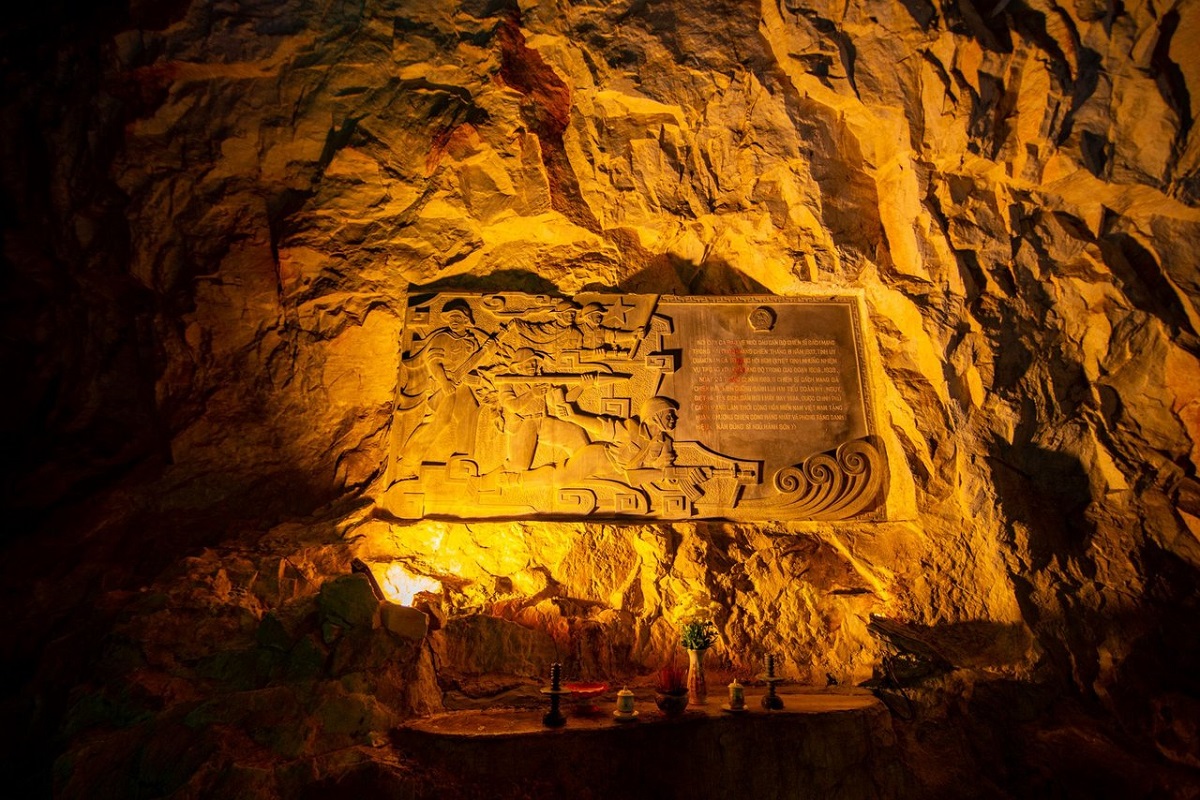
What to Expect in Am Phu Cave?
Am Phu cave is longer than any caves in Da Nang. It’s 300 meters long, with impressive marble chambers and a link to local Buddhist culture. Its entrance looks enormous from outside. In traditional belief, after death, people will go to hell. They must walk across a slippery bridge, and those of bad behaviors fall into the river below.
To the left of the Main chamber, the staircase leads to the highest point of the Am Phu cave. There, locals call it “the Heaven”. That’s why visitors will see Buddha statues, birds, clouds, etc that remind about heaven. Stairs are steep in general, especially around the top, and sometimes the hands must be used. We advise paying attention and staying careful while walking up and down.
Walking further inside and looking to the right, there are the 10 Kings of hell who judge the dead in the Last Judgement. Up to what people act, the kings determine which place they should be sent later: hell, heaven or continue to live on Earth. Before that, the Ox Head and the Horse Face take them from their families.
In the 18 Levels of Hell, visitors go stairs to see different faults of human beings (when they’re living) and physical tortunes they face after death. In Vietnamese culture, the most serious fault is impiety to parents. In lower places, others are shown, such as being procurer, robbing, thief, using mouth to harm people. Adults are advised to consider allowing kids to visit this section of the cave due to scary scenes. At the end of the passage, Buddhists can pray and confess.
The last chamber features tall, vertical walls and it’s open at the top. Sun rays fall in it at noon time, giving a wonderfully fairy spectacle.
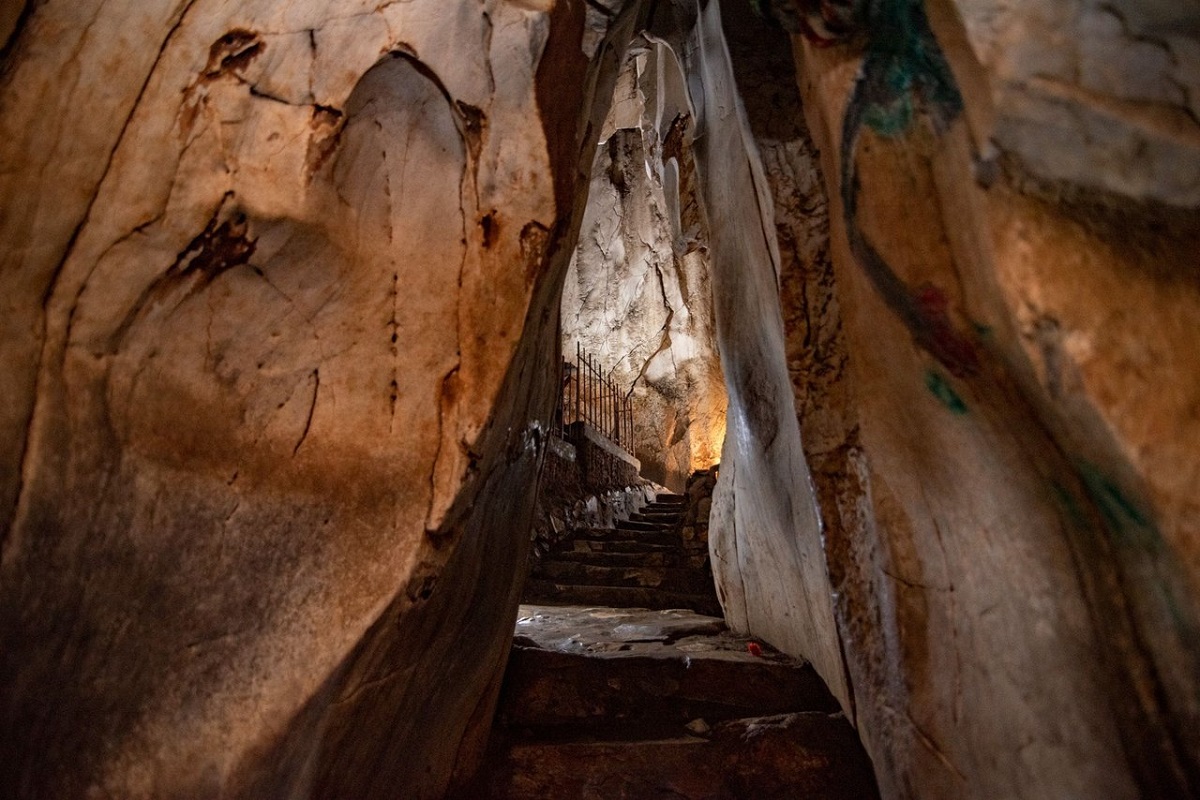
Places to Visit near Am Phu Cave
Non Nuoc Stone Carving Village
Along Huyen Tran Cong Chua St, there are a lot of marble sculptures and marble shops. Together with surroundings, the area is called “Non Nuoc stone carving village”. The carving tradition has been continued from 16th century. Today, 300 households make a variety of products for sale, and for exportation.
Linh Ung Pagoda
Linh Ung pagoda at the Marble mountains is the first of three Linh Ung pagodas in Da Nang. It’s constructed in 1826 by request of Minh Mang king who ruled the country from 1820 to 1840. To get to this temple, visitors have two options: by elevator (15,000 VND per person) or climbing stairs. Behind it, there is Tang Chon cave and its chambers where monks lived in the past.
Tam Thai Pagoda
On the other side of the mountain, Tam Thai pagoda has the same year of construction as Linh Ung pagoda, 1826. Minh Mang king built it because of the promise of his father – founder of the Nguyen dynasty. During his reign, this was recognized as the national temple, indicating its importance in the spiritual life of the family.
Huyen Khong Cave
Behind Tam Thai pagoda, Huyen Khong cave has the largest single chamber in the Marble mountains. Within it, local people and monks build small temples and shrines for Buddha, gods and goddesses. Here, visitors enjoy spectacular natural formations and amazing shafts of sunlight falling down from the top. No doubt that many photographers come to capture special photos, especially at midday.
Quan The Am Pagoda
1,5 kilometers away from Am Phu cave, Quan The Am pagoda is a new and massive Buddhist temple by the Metal and Fire mountains. Its name means “Lady Buddha” so it’s for veneration to her. On 19th day of the 2nd lunar month each year, monks and locals celebrate the Lady Buddha festival – the biggest religious festival of Da Nang.
Am Phu Cave Tour
To fill a half day, our Am Phu cave tour also includes the rest of the Marble Mountains and Linh Ung pagoda on Son Tra peninsula. Depending on the location of the hotel, our guide and driver will take you to the cave. After that, for convenience, Buddhist temples, caves and peaks of the Water mountain are next places to visit. An elevator ride is available to go up, and skip 106 steps to reach the first sight. Following this itinerary, Linh Ung pagoda – Da Nang’s largest temple is the last. It comprises grand worshipping halls amid bonsai gardens, beautiful view to the city, and Vietnam’s tallest Lady Buddha statue (67 m). See details in https://centralvietnamguide.com/tour/am-phu-cave-tour/.
Am Phu Cave on Google Maps
Related Posts
Non Nuoc Beach: The Famous Beach of Da Nang
Besides the Golden hands bridge – a global hit, Da Nang city also has beautiful beaches. If looking for somewhere great to stay and have a slow holiday, Non Nuoc
How to Get from Da Nang to My Son Sanctuary
Known as ‘the Angkor Wat of Vietnam’, My Son sanctuary boasts of its sophisticated temples dating back from 4th century. Sadly, in 14th century, it’s abandoned in the forests. Today,
Bach Ma National Park: Hiking, Trekking in Da Nang and Hoi An
Two best places for trekking and hiking in and near Da Nang are Son Tra mountain (peninsula) and Bach Ma national park. Which one is better is actually personal because these
Hoi An Wet Season: What to Do in Hoi An When It Rains?
No beach, no pool, no outdoor adventures? What to do in Hoi An when it rains? This is a very popular question from travelers who come to Vietnam in the
Thanh Ha Terracotta Park
Between 15th and 19th centuries, Hoi An was one of major stopovers for sailing merchants to trade in Southeast Asia. Meanwhile, craftspeople in its Thanh Ha village produce high-quality pottery
Vinwonders Nam Hoi An Theme Park (formerly Vinpearl Nam Hoi An)
In addition to historical and cultural attractions, nowadays Hoi An also has a couple of amusement parks to entertain. Definitely, they’re ideal places for families with children and groups of
Am Phu Cave (Hell Cave) – Things to Do in Da Nang
Although in the Marble mountains – the most visited attraction in Da Nang, travelers often miss Am Phu cave. One of reasons is that it’s mentioned much online and not
Hoi An or Hue: Which is Better?
Both Hoi An and Hue cities are in the middle of Vietnam, and they’re not far from each other (about 130 km). Therefore, for those who travel from north to
Asia Park and Sun Wheel in Da Nang (Sun World Da Nang Wonders)
Have you ever seen the wheel of Da Nang? That is the Sun Wheel. It’s a part of greater Asia Park – an amusement park with a heap of fun
The Official Hoi An Travel Guide (MUST READ)
By the estuary of Thu Bon river, Hoi An is one of the best places to visit in Vietnam. This Vietnamese town is a package for travelers – a pretty
The Hoi An Market (Hoi An Central Market) Complete Guide
The Hoi An Market is the first market in Hoi An ever. Over centuries, it’s still the largest market in town although the town has a much bigger size than
Hoi An Memories Show: The Best of Hoi An Impression Theme Park
The Hoi An Memories Show is a famous series of outdoor performances in Hoi An at the present time. Thanks to its exceptional production and great cultural stories, it becomes
How to Get to Golden Bridge from Da Nang
The Golden Bridge (aka the Golden Hands Bridge) in Da Nang is a must visit attraction in Vietnam today. Many foreign travelers come to the city, just because they love
Hoi An Bridge: Famous Bridges in Hoi An
Hoi An has many bridges because it’s located at the confluence of 3 rivers: Thu Bon river, De Vong river and Truong Giang “Long river”. The distributaries of these rivers
Da Nang Food Specialties: What to Eat in Da Nang
Da Nang is known as a food capital of central Vietnam. This city boasts many yummy dishes, prepared by distinctive recipes and some of them are famous all over the
How to Get From Hoi An to My Son Sanctuary
My Son sanctuary is one of the most popular places to visit for tourists staying overnight in Hoi An, especially those who spend many days there. It’s known for a
Hoi An’s Chinese Assembly Halls and Chinese Temples
Chinese people migrated to Hoi An from the early 17th century. Today, Chinese communities as a whole are the second most important piece to form the town’s unique culture. The foremost
Hoi An Walking Tours: Heritage, Foods, Photography & Locals
Strolling around heritage quarters with a local guide is the activity that so many travelers love to do in Hoi An. It enriches their time in this lovely town. Firstly,
Hoi An Self Guided Walking Tour – Hoi An On Your Own
Hoi An old town is friendly for pedestrians, especially during the time that motorized vehicles (scooters, cars, etc) are prohibited to move around its heritage quarters. That is safe for
How to Visit Golden Bridge Vietnam
The Golden Hand Bridge of Ba Na hills today is a dream place to visit for many travelers. Since it opened in June 2018, millions of people have set their
Da Nang Shore Excursions: Guided Tours From Tien Sa Port
Da Nang Vietnam today is one of stopovers for many cruises that travel from continent to continent, from country to country. It owns an ideal seaport to moor and it
Unique Experiences in Hoi An and Why?
Today, travelers seek more experiences in the destination they go to. They want to have a deeper understanding about the culture of local people and interact with them. No other
Han Market (Cho Han): Where to Shop in Da Nang?
In the heart of Da Nang, the Han market is a popular place for visitors to buy something to bring home due to the diversity of merchandise. Back to history,
An Bang Beach: A Guide to Hoi An’s Best Beach
An Bang beach now becomes a popular tourist attraction in Hoi An. It may be the best known and most convenient to reach from the town’s centre. Not only tourists,
Experiences in Hoi An: Get Insight Into Hoi An’s Local Culture
As the most unique Vietnamese town, Hoi An is definitely worth visiting. Here, visitors have many things to do and experiences for their holiday time. Everyone knows that it has
Da Nang Cathedral (Da Nang Pink Church)
Da Nang became a French protectorate on 3rd October 1888, under the name “Tourane”. By the Han river, the colonists designed a grid of streets with public buildings, a city hall,
Things to Do in Ba Na Hills Besides Golden Bridge
According to local authorities, 50% of visitors coming to Da Nang and Hoi An visit the Ba Na hills. In other words, that is nearly 10 millions of people. This
Hoi An Nightlife: What to Do in Hoi An At Night?
After dark, Hoi An becomes exceptionally spectacular. If planning to stay overnight or visiting this ancient heritage town, at least travelers know that it’s “decorated” by so many colorful lanterns.
Hoi An Countryside: Villages, Rice Fields & Tours
By the coast, Hoi An is at the confluence of 3 rivers: Thu Bon river, Truong Giang river and De Vong river. This economically strategic location has supported trading activities
How to Get to Golden Bridge From Hoi An
There are many travelers visiting the Golden bridge from Hoi An. Both the bridge and the town today are must-see places in the region, so staying overnight in the town
Hoi An Entrance Fee: Old Town, Golden Bridge, My Son, More
Are you planning to visit Hoi An? And you don’t know how much cash you need to prepare for visiting places? This article lists tourist attractions in Hoi An and
Hoi An Airport: Everything You Need to Know
Hoi An is a famous tourist city in Vietnam. It’s 800 kilometers away from Hanoi, the capital of Vietnam and nearly 1,000 kilometers from Ho Chi Minh city, the biggest
Hoi An Lantern Boat Ride on Hoai River
A lantern boat ride is a thing to do that visitors must do today in Hoi An. For many centuries, locals have taken it on the Hoai river by the
Da Nang Half Day Tours
In addition to day trips, travelers have many options of half-day tours in Da Nang to choose from. Not to spend a full day at different places, maybe far from
Hoi An Private Car and Driver
Hoi An is one of the most popular tourist destinations in Vietnam. In the busiest year, it attracts about 9 millions visitors who come to enjoy its charming beauty, rich
Da Nang Private Car and Driver
Your next holiday destination is Da Nang? You prefer to travel by yourself? Hiring a private car is one of the best options for you to explore with freedom, flexibility
What to Do in Hoi An Ancient Town
Hoi An Ancient Town is a must see, not only thanks to its world heritage title, but also to its vintage urban landscape, lots of attractions and activities. In the
Da Nang and Hoi An Itinerary for Visitors Staying Overnight in Hoi An
Da Nang and Hoi An are twin cities in the heart of Central Vietnam. Both are popular tourist destinations for either domestic or international visitors, and share many similarities. Due
Hoi An 3 Day Itinerary: A Travel Plan for 3 Days in Hoi An
3 days are a perfect duration to stay overnight in Hoi An and explore captivating places in and around it. Especially for those who travel from city to city or
Hoi An Free Things to Do: Budget Travel in Hoi An Vietnam
Travelers should know free things to do in Hoi An, to save the budget for this wonderful city and by that, can stay longer to explore. From old town, countryside
Hoi An One Day Itinerary: A Travel Plan for One Day in Hoi An
From a backwater town in the 1990s, Hoi An today is one of leading tourist destinations across Vietnam. In a recent year, it attracted 8,5 millions of overnight visitors and
Da Nang Things to Do: Guide to What to Do in Da Nang Vietnam
Unquestionably, Da Nang deserves a holiday trip from all types of traveller. Firstly, due to the weather. It has a longer sunny time than the north but less hot than
Da Nang Best Things to Do and Reasons
Da Nang is the largest tourist center in Central Vietnam. It owns fascinating natural and cultural places that attract both Vietnamese and foreigners. In the busiest year, this city of
Hoi An Half-Day Tours: Guide to Half Day Trips From Hoi An
Top attractions near Hoi An require a couple of hours or half a day, to get there and visit around. The reason is that all have many things to see,
Hoi An Day Tours: A Guide to Best Day Trips From Hoi An
Near Hoi An, there are many fantastic places making travelers can’t stay in the room and have to go out to explore. Appeal Golden bridge – the new world wonder,
Hoi An Beach: A Guide to All Beaches in Hoi An Vietnam
Not only an old town, Hoi An has beaches as well! That are sandy, edged by tropical water and lined by palm forests. Travelers don’t need to wait or move
Hoi An Food Specialties
Hoi An is a melting pot where people from different parts of Vietnam and countries in the world have gathered and exchanged their cultures. As a result, this town has
How to Get From Hoi An to Da Nang
Da Nang is the neighbouring city of Hoi An. It's the capital of Central Vietnam and has the most important (busiest) transport hubs of the region, such as airport, train
Hoi An Cheap Things to Do: All Solo Travelers Need to Know
Knowing free and cheap things to do in the city where travelers are going to visit, is helpful. First of all, they can save and, thanks to that, can stretch
Hoi An Best Things To Do: Recommendations from Local Experts
It is no coincidence that Hoi An is in the list of must-visit places once in the lifetime of many travelers. Located by a river, it’s borned to welcome people
Hoi An Things to Do: All What Can You Do in Hoi An Vietnam
Hoi An is in the bucket list of most travellers who plan to visit the Central part of Vietnam. It’s a lovely old and small town located downstream of a
Hoi An Things Not to Miss: A Guide to Must Do in Hoi An
In fact, there are so many things to do in Hoi An, one of the 10 best cities in Asia by Travel + Leisure in 2021. It has a lantern-filled
Hoi An or Da Nang: Which is Better for First Time Visitor?
Da Nang and Hoi An are located in Central Vietnam, with a distance of roughly 30 km. To the north, Da Nang is the capital city of the region, with
Hoi An Pottery Village: A Guide to Thanh Ha Pottery Village
Hoi An used to be a bustling, prosperous trade port during past centuries, before its role was replaced by Da Nang. Merchants from many countries on different continents came here
Hoi An Ancient Town Tour
Hoi An Ancient Town is a Unesco world heritage site by the mouth of the Thu Bon River. It has grid-plan streets filled by silk lanterns and bougainvillea flowers that
Hoi An Old Town Ticket: Price, Sellers, Included Sites, More
As an attraction including attractions, Hoi An Old Town requires an entrance ticket to tourists who come from other parts of Vietnam and the world. It raises funds for preservation of
My Son Sanctuary Tour
My Son Sanctuary is a Unesco world heritage site, attracting 450,000 visitors in recent years. It’s the best remains left by the fallen Champa Kingdom which ruled a part of
Hoi An Lanterns: Festival, Making Class, Where to Buy, More
Lanterns are the signature of Hoi An Old Town, the 3rd Unesco world heritage site in Vietnam. Especially at night, these traditional handicraft objects are lit up and make the town
Hoi An Best Area to Stay: Guide to Where to Stay in Hoi An
In the busiest year, nearly 5,5 millions travellers decided to stay overnight in Hoi An. It’s the largest number that a city in the Central coast of Vietnam ever achieved.
Hoi An Weather by Month: Guide to Hoi An Monthly Weather
Hoi An won the title “Asia’s leading cultural destination” recently in a reputable global travel award. It’s a pretty riverine-coastal town with an ancient root, surrounded by peaceful pieces of
Da Nang Best Area to Stay: Guide to Where to Stay in Da Nang
In the Central coast, Da Nang has an area of 1,285 km2 and population of 1,134 people, making it become Vietnam’s 4th largest city. It plays an important role in the
Da Nang Cave Tour: Best Underground Activities in Da Nang
Different from Hue and Hoi An, Da Nang has limestone caves and grottoes. All of them are within the Marble Mountains (Ngu Hanh Son), a complex of 5 amazing hills
Da Nang Best Time to Visit: Guide to Best Weather in Da Nang
Da Nang is titled “Asia’s leading festival and event destination” by the World Travel Awards or Vietnam’s greenest city by the WWF. Its reputation comes from amazing natural mountain-to-sea sceneries,
Da Nang Weather by Month: Guide to Monthly Weather in Da Nang
In Central Vietnam, Da Nang has a tropical monsoon climate with two distinct seasons that each starts later than the North 2 months. Because of being shielded by the spectacular
What to Do in Da Nang At Night
Between the sunset and midnight, there are many things to do in Da Nang that travelers should know before getting to bed. Thankfully, different styles of traveling, budget or ages
Lang Co Vietnam Travel Guide
Lang Co was a lovely backwater town nestled at the foot of spectacular Hai Van Pass for some decades. Not yet widely known because of the popularity of beaches in
Hoi An River Cruise: Guide to The Best Boat Tour in Hoi An
Hoi An town is by the left bank of the Thu Bon River, and by that, it draws plenty of merchants by sailing boat to visit and trade. Its golden
What to Do in Da Nang for 3 Days
Da Nang is a lovely coastal city in the middle of 3 Unesco world heritages Hue, Hoi An and My Son Sanctuary. This most worth-living municipality owns a poetic river
Hoi An Old Town Boats: Guide to Boat Rides in Hoi An Town
Hoi An town sits by the left bank of the Thu Bon River, the largest and most important waterway in mother Quang Nam province. It’s also near the mouth of
Hoi An 2 Day Itinerary: Traveler Guide to 2 Days in Hoi An
2 days are enough to know the highlights in Hoi An, a famous tourist destination in Central Vietnam. And for those who travel from city to city, 48 hours are
Cham Island Hoi An
The purple islands seen from An Bang or Cua Dai beaches are the Cham Islands. It’s one of the kind in the region where God bless it with fabulous beautiful
Hoi An Basket Boat Ride
Nowhere else outside of Hoi An Coconut Village, travelers can find a basket boat ride across the immense palm forests. It’s an experience that allows the passengers to know better
Hoi An Coconut Village: A Guide to Cam Thanh Coconut Village
Hoi An Coconut Village boasts of the most interlaced waterway system in the city. Four rivers encircle it and are connected together with smaller canals. Thanks to fertile alluvia and
My Khe Beach: A Complete Guide to Da Nang’s Best Beach
Da Nang is a lovely seaside city with many beaches, and the best is My Khe. Located on the eastern coastline, it’s between little-known beaches near the foot of Son
Da Nang Day Trips: Guide to Best Day Tours From Da Nang
Centre and outskirts of Da Nang have incredible attractions where travellers need to spend many hours to get to and fully explore. There are the Ba Na Hills and Golden
Museums in Da Nang
Da Nang has many museums where visitors can see and learn a lot. Generally, their exhibitions have different themes, varying in stages of the history, groups of people (communities) having
Linh Ung Pagoda: Trio of Da Nang’s Holiest Mountain Temples
Linh Ung means “wishes answered miraculously” in Sino-Vietnamese. And it’s first used in 1841 to name a pagoda in the Marble Mountains by Thanh Thai, the 10th king of the
Da Nang Night Market: A Thing To Do in Da Nang at Night
Different from day markets in Da Nang, night markets are held open-air and on streets where traffic is active during sunny hours. A visit there provides the chance to understand
Guide to Son Tra Mountain (Monkey Mountain) in Da Nang, Vietnam
From My Khe Beach or Han River promenades, tourists can see a part of the Son Tra Mountain. Although being near the city center, natural forests on its slopes have
Ba Na Hills Tour
Ba Na Hills is one of the best attractions in Da Nang, and the country. Its full name is the Ba Na-Suoi Mo Tourist Area, made from “Ba Na hill
Hoi An Cham Temples: My Son Sanctuary & Quang Nam Temples
Cham people settled in Hoi An before the Vietnamese arrived and handed it over in 14th century. Influenced by Indian culture, they called the land “Amaravati”, similar name to a
Da Nang Cable Car
No surprise that now, when travelers make the plan to tour around Vietnam, there are many cable car rides recommended. Some are top things to do in its cities. The
How to Get from Da Nang Airport to Hoi An
Located in the city of the same name, Da Nang airport is the nearest airport to Hoi An. So, if travelers want to see an extremely-colorful Lantern festival or try
Da Nang to Hoi An: Best Da Nang Airport Transfer and More
If traveling to Hoi An by air, train and cruise ship, visitors will come to Da Nang first and then have a transfer. The largest city of Central Vietnam holds
Hoi An Tour Guide: How to Find a Private Tour Guide in Hoi An
Most tour packages in Hoi An cover “ a guide”. He or she may be the first and closest local to the visitors, who lead the group to enjoy the
Hoi An Ancient Town Attractions
Spreading over an area of 30 hectares, Hoi An Old Town owns more than 1,100 timber buildings varying in function or type. In the oldest street, the Japanese bridge spans
Hai Van Pass Da Nang: Map, Route, Weather, History, Tour
Truong Son or Annamite Range is the most dramatic mountain ridge in Vietnam. When it juts out into the sea, spectacular Hai Van Pass is formed. This amazing sculpture of
Hoi An Old Town Map
There are so many things to see, do, eat and sleep in Hoi An Old Town, so the visitors often are confused while planning and exploring. Starting the research from
Tra Que Vegetable Village
Located in a prime location between two famous attractions, the Old Town and An Bang beach, Tra Que vegetable village is a featured point of interest. It’s famous for vegetable
Guide to Hoi An Lantern Festival – Hoi An Full Moon Festival
The Lantern Festival is amongst the best times to visit Hoi An. In which, visitors will immerse themselves in a shimmering world of uncounted lantern lights. When the crowds fill
Hoi An Night Market: A Thing to Do in Hoi An at Night
One of the most visited attractions in Hoi An is its night market. Because it is located right near the Old town, first-timer travelers commonly explore both top sights in
Da Nang Attractions Guide: What to See in Da Nang Vietnam?
Da Nang is the capital city of the Central region, and one of the most attractive destinations to tourists in Vietnam. It’s established by French colonists and called by them
Guide to Lady Buddha (Goddess of Mercy) in Monkey Mountain, Da Nang
From the East coast, visitors can see an enormous white statue with the mountain backdrop, that is the Lady Buddha Da Nang. Located in the ground of Linh Ung Pagoda,
My Son Sanctuary Travel Guide
My Son Sanctuary is a complex of Hindu temples and a Unesco world heritage site from 1999. It’s 40 km away from Hoi An and 70 km to the southwest
Da Nang Museum of Cham Sculpture
Da Nang Museum of Cham Sculpture is a highlight of the Han river waterfront. It’s established by French archaeologists to preserve intricate works of art of Champa kingdom, which ruled
Dragon Bridge Da Nang: The Fire-Breathing Da Nang Bridge
Praised to be the world's 30 most unique bridges recently, Dragon Bridge became the new icon for a Han river bridge in Da Nang. Spanning from the 100-years-old Cham Museum,
Ba Na Hills Travel Guide: A First Timer’s Complete Guide
50% of visitors to Da Nang plan to visit Ba Na Hills in their itinerary. It’s larger for first timers who may know about its inspirational Golden Bridge, world-record cable
Golden Bridge Da Nang: A Guide to The Iconic Da Nang Bridge
Recently-built but at the present time, the Golden Bridge Da Nang is one of the awaited attractions in Vietnam. On a slope of high foggy mountain, this delicate bridge and
Da Nang Bridge: A Guide to Famous Bridges in Da Nang
Da Nang has many bridges, and some of them are famous nationally and internationally. Before the recently-built Golden Bridge which made a boom in social media, people only knew bridges
Ba Na Hills Cable Car: World Record, Cost, Reschedule, Map
Cable car is one of the first ideas travelers think about Ba Na Hills, a Da Nang’s top attraction. It helps to shorten the time to get to the hills


